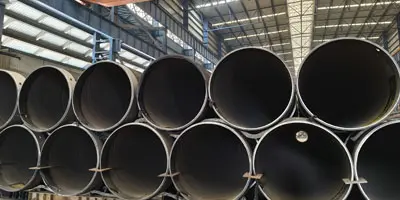The pup joint is a commonly used pipeline component in oilfield exploitation or oil and gas pipeline systems, mainly used to connect two long sections of pipelines. The length of the nipple is usually short, generally not more than a few meters, but it has the same diameter and wall thickness as the
casing and tubing, so it can ensure the stability and safety of the pipeline system.
In practical applications, pup joints are usually used in situations where the length of the pipeline needs to be adjusted, or when installing special devices, to play a transition and connection role. Although the nipple is short in length, it plays a vital role in the entire oil and gas pipeline system. The nipple can not only effectively shorten the assembly time, but also ensure that the connection of the pipeline is more flexible and convenient.
The role of the pup joint
Connecting pipelines: The main function of the nipple is to connect two long sections of tubing or casing to make up for the lack of pipeline length and ensure the continuity of the entire pipeline system.
Adjusting the length: In some specific construction environments, the length of the tubing may need to be adjusted to meet different installation requirements. The nipple can be used as a flexible solution for precise length adjustment.
Transition function: In some occasions, the nipple is also used for transition between pipelines to help oil and gas flow smoothly between different pipe sections and reduce pressure differences and flow resistance.
Installation tips for pup joints
Although the installation of the nipples seems simple, in order to ensure the safety, stability and efficiency of the system, the following points should be noted during the installation process:
Material selection quality: The material of the pup joints should match the material of the pipeline to ensure the strength and durability of the connection. Commonly used materials include high-strength steels such as J55, N80, etc. These materials have undergone special heat treatment processes and can adapt to the high-pressure and high-temperature environment in oil and gas wells.
Pipeline interface treatment: Before installing the pup joints, ensure that the pipeline interface is clean and smooth to prevent impurities and dirt from entering the connection to avoid affecting the sealing and connection strength.
Threaded connection: The pup joints are usually threaded, and special attention should be paid to the integrity of the threads during installation. Damage to the threads may cause leakage or loose connections, so use appropriate torque during installation and avoid over-tightening or loosening.
Anti-corrosion measures: Since the oil and gas production environment usually contains corrosive media, appropriate anti-corrosion measures should be taken when installing pup joints. For example, an anti-corrosion coating can be applied to the joint, or a short-joint material with anti-corrosion properties can be used to extend its service life.
Sealing test: After the installation is completed, the sealing of the pup joint needs to be tested to ensure that no leakage occurs under high pressure conditions. The reliability of the connection is usually checked by water pressure test or air pressure test.
Conclusion
Although the role of the tubing pup joint in oilfield exploitation and oil and gas pipeline systems does not seem complicated on the surface, it is essential to ensure the safe, reliable and stable operation of the pipeline system. During the installation process, following the above tips and steps can effectively avoid common problems in the installation and ensure the long-term and efficient operation of the system.
By reasonably selecting materials, standardizing operating procedures, and conducting necessary anti-corrosion and sealing tests, the tubing
pup joint can give full play to its key role in connection and transition, helping the oil and gas pipeline system to achieve higher safety and efficiency.






 English
English Español
Español بالعربية
بالعربية










 Phone :
Phone :  Whatsapp :
Whatsapp :  Email :
Email : 


